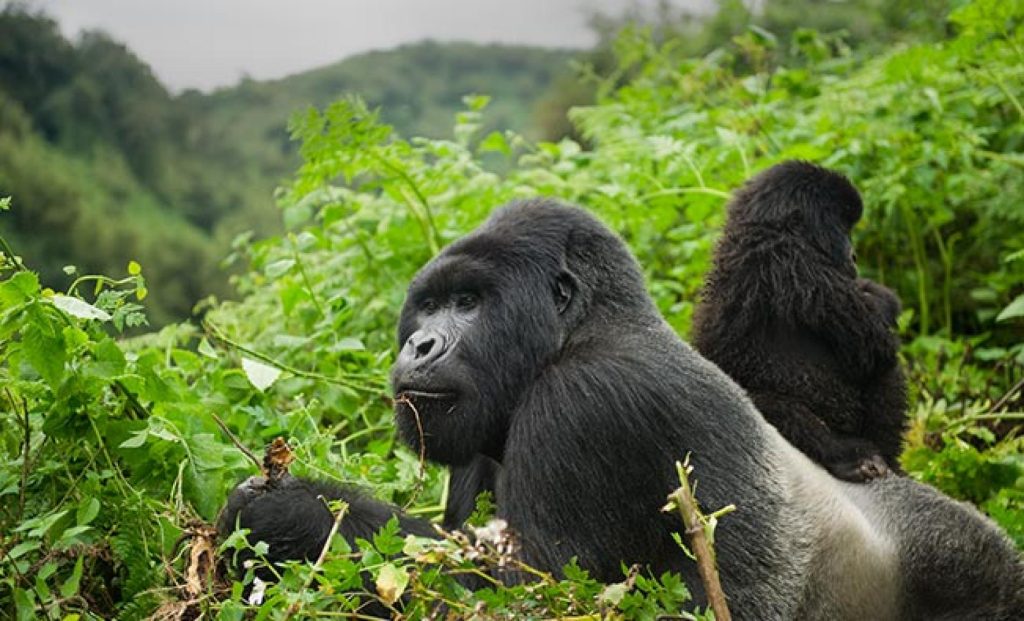How difficult is gorilla trekking in Rwanda
Gorilla trekking in Rwanda is one of the best wildlife adventures in Africa. When planning a gorilla safari to Rwanda, ‘‘How difficult is gorilla trekking in Rwanda?’’ is one of the common questions that arises when planning gorilla trekking tours in Rwanda. How difficult is trekking to see gorillas?
Mountain gorillas live in thick jungles, with high humidity, and elevations reaching 3,000 meters. Trekking to see gorillas in Rwanda can be demanding, but it’s generally achievable for individuals with moderate physical fitness.
During the trek, guides often clear paths with machetes through the dense jungle, and there’s assistance available from porters to navigate the toughest sections of the forest. You should be prepared to get muddy and sweaty during your hike.
In this article, we will explain How difficult is gorilla trekking in Rwanda.
Trekking gorillas in Rwanda has stages and can be broken down into two. The first stage involves walking 30 to 60 minutes from the closest parking area to the offices. The second stage is the trek through the forest to find the gorillas. The guides usually locate gorillas based on their knowledge of where the gorillas last nested the previous night. You will spend from 10 minutes to two hours trekking to locate the gorillas. On average, for groups closer to the edge of the forest, it’s around 20 to 30 minutes.
As you start the trek, it is generally quite flat and not too demanding, except for the more challenging uphill climb to reach the Susa Group. During the trek, the vegetation may pose a
great challenge and trekkers might need to bend, crawl, and find their way through the jungle, especially when dealing with sharp nettles.
Things that make gorilla trekking difficult
Fitness Levels

gorilla trekking in Rwanda
It is important to understand that the level of difficulty of gorilla trekking in Rwanda can vary greatly depending on your age and fitness condition. This is especially important if you are tasked with following the Susa Family, who are the most demanding group.
Never underestimate the difficulty of a Rwandan gorilla trek, even if you ride by bicycle every day. The consequences of high-altitude breathing may still require you to take frequent breaks.
It is uncommon for elderly tourists to get so overwhelmed that they choose to cancel their trip, despite the fact that the gorilla trek can be extremely difficult. People often overcome challenges because the experience is so inspiring.
Location of Rwanda’s gorilla groups
The particular gorilla group you are assigned to visit is one of the major determinants of how difficult your gorilla trekking adventure in Rwanda will be. Generally speaking, the hike to the Susa Group is usually the hardest (though, with just about 19 members, it’s also the most rewarding). The Sabyinyo Group, on the other hand, is typically the most accessible.
It’s usually not too difficult to trek to groups like Kwitonda, Hirwa, and Group Thirteen. On the other hand, although not as difficult as the climb to the Susa Group, the hikes to the
Amahoro and Umubano Groups can be more strenuous. It’s crucial to remember that every group may occasionally pose unforeseen difficulties or be very easy to reach on a given day.
Furthermore, the park officials cannot guarantee in advance which particular group you will be allocated to. But the guides at Kiningi do their best to pair people up with the right group, particularly if you let them know what you’re into. Trekkers to the Sabyinyo Group are often older, individuals, whilst those to the Susa Group are typically younger and more muscular.
Other factors that may influence the difficulty off gorilla trekking in Rwanda
Terrain
The trek usually takes place in the volcanic mountain ranges of Rwanda, which means you’ll encounter steep slopes, uneven ground, and dense vegetation. This can make the hike challenging for some individuals, especially those who are not used to such conditions.
Altitude
The altitude can also pose a challenge, as some of the gorilla trekking areas are located at high elevations. Altitude sickness is a potential risk, and it’s important to acclimatize yourself if you’re not accustomed to higher altitudes.
Duration
The duration of the trek can vary depending on where the gorillas are located on a particular day. Treks can last anywhere from 1-4 hours each way, so it’s important to be prepared for endurance and stamina.
Weather conditions
The weather in Rwanda can also play a role in the difficulty of gorilla trekking. Rainfall is common in the region, and trails can become slippery and muddy, making the hike more challenging.
Despite the potential challenges, many visitors of various fitness levels successfully complete gorilla trekking in Rwanda each year. The experience of encountering these incredible creatures in their natural habitat is well worth the effort for many people. Plan your Rwanda gorilla trekking tour with us and enjoy long-lasting memories of these beautiful creatures.
